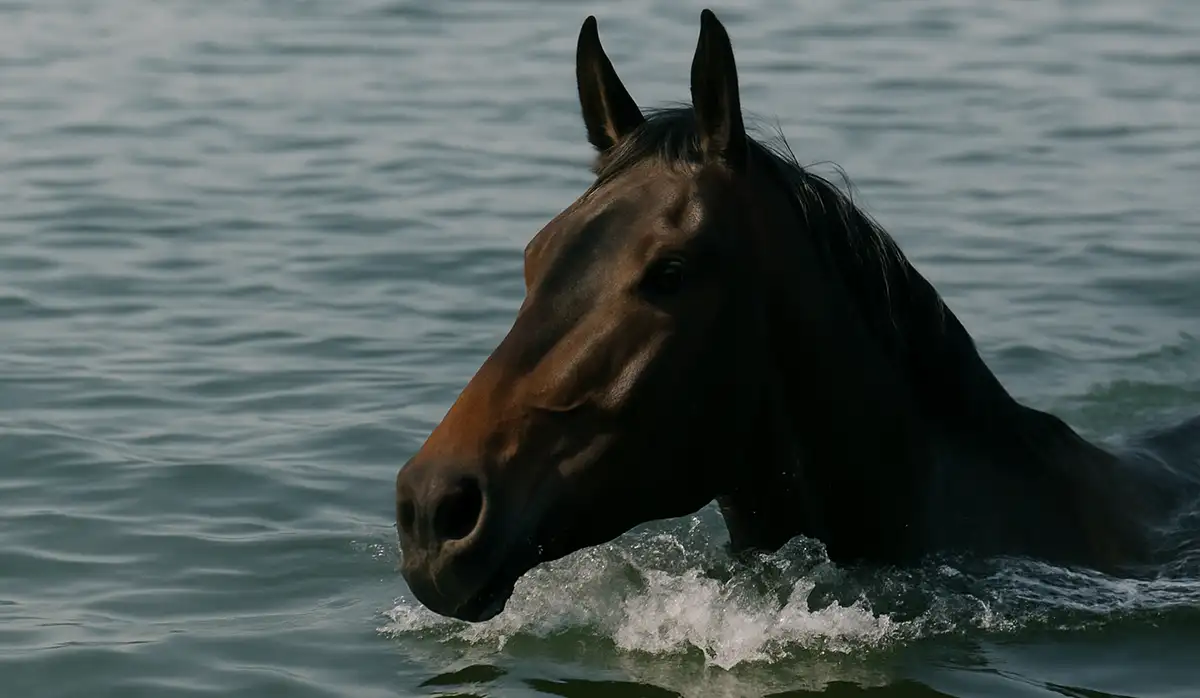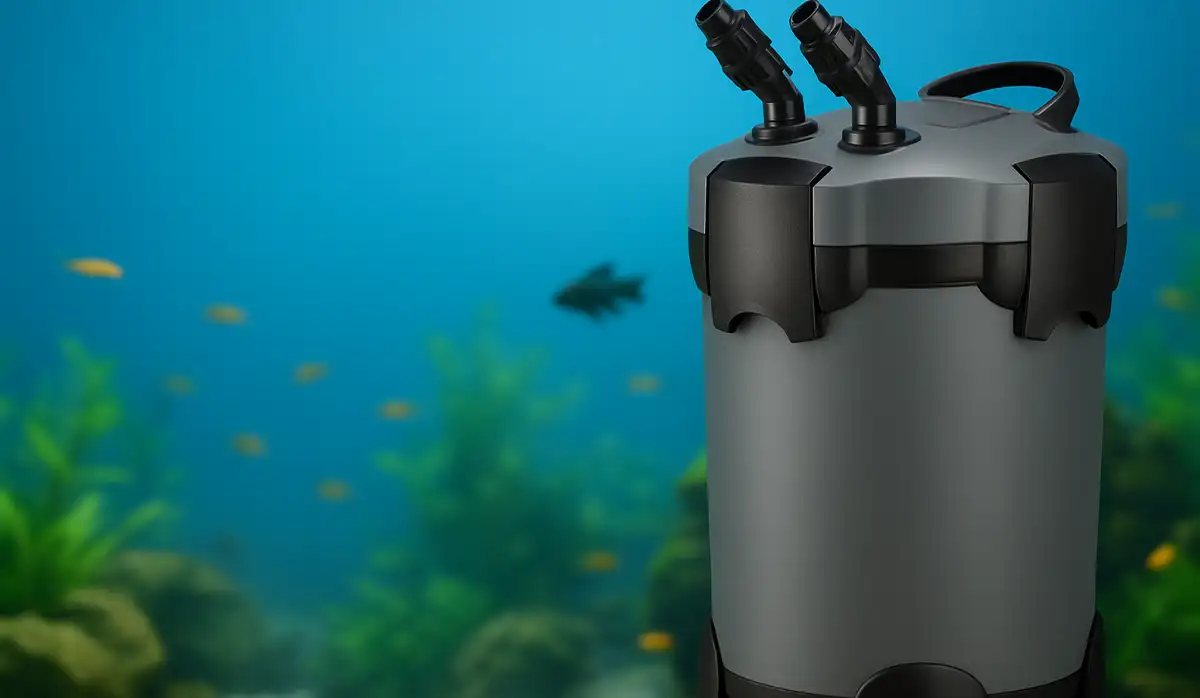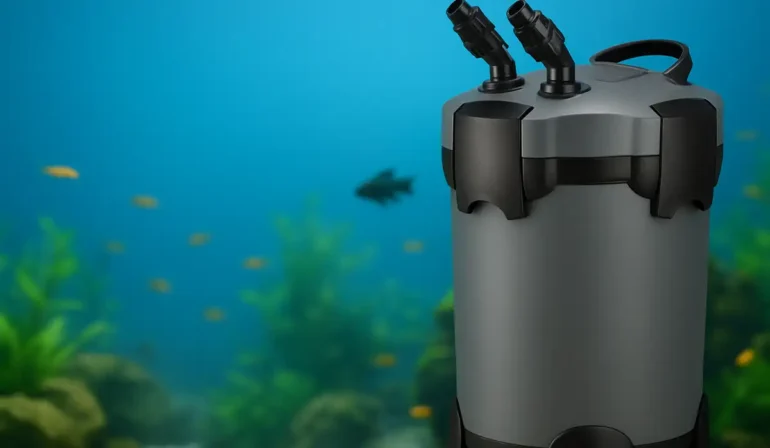Can Horses Swim? The Surprising Truth About Equines in Water
By Pet Luvz on May 25, 2025

Whether you’re a seasoned equestrian, a first-time horse owner, or simply someone fascinated by animals, you may have wondered: Can horses swim? It’s a surprisingly common question, and the answer might astonish you.
Horses, known for their strength and grace on land, are also surprisingly capable in the water. While we often picture horses galloping through fields or performing in arenas, their relationship with water goes much deeper, literally. Understanding whether “Can Horses Swim” horses can swim opens up new perspectives on their evolution, physical capabilities, training techniques, and overall care.
In this guide, we’ll explore everything you need to know about horses and swimming—from the science behind their natural ability to swim, to the practical benefits it offers for their health and fitness. We’ll also look at safety considerations, common myths, and how you can safely introduce your horse to swimming.
So, if you’re curious about equine swimming ability, wondering how it can be used for training or therapy, or thinking about taking your horse for a dip this summer, you’re in the right place.
Let’s dive in.
Table of Contents
Do Horses Naturally Know How to Swim?
Yes, swimming is an instinctive behavior in horses. Unlike some animals that need to be taught, horses are born with the natural ability to swim. When submerged in water, a horse will begin to paddle using a trot-like motion with its legs. Their large lung capacity also aids buoyancy, allowing them to float while propelling forward.
Interestingly, horses don’t need any training to start swimming. Once they feel their hooves leave the ground in water, their body instinctively takes over, and they begin to swim.
Why Do Horses Swim?
In the wild, horses have had to cross rivers and streams as part of their migration patterns or to access food and shelter. This natural need has hardwired their ability to swim into their DNA. Today, domestic horses may not need to swim for survival, but their bodies still retain this ability.
Benefits of Swimming for Horses
Swimming isn’t just a survival skill—it’s one of the most effective and gentle full-body workouts for horses. Whether your horse is a performance athlete, in recovery, or simply in need of physical and mental stimulation, swimming offers a wide range of advantages.
Here are the key benefits of horse swimming:
🟢 Low-Impact, High-Reward Exercise
Swimming allows horses to work their muscles without the jarring impact associated with running or jumping. This is especially beneficial for:
- Older horses with joint stiffness
- Horses recovering from orthopedic surgeries or tendon/ligament injuries
- Animals with arthritis or other degenerative conditions
The water supports their body weight, minimizing pressure on the musculoskeletal system while still delivering a thorough workout.
🟢 Improves Cardiovascular Fitness
It increases oxygen intake and improves circulation, helping horses build stamina and overall fitness more efficiently than some land-based routines.
Regular swim sessions can help:
- Build endurance for performance horses
- Condition horses during the off-season
- Support weight management and metabolic health
🟢 Enhances Muscle Strength and Tone
The natural resistance of water helps horses develop strong, lean muscle without overstraining their limbs. The constant motion against resistance activates various muscle groups, especially in the back, shoulders, hindquarters, and abdominal core.
It’s a safe way to:
- Promote even muscle development
- Improve posture and balance
- Build strength without increasing the risk of injury
🟢 Promotes Flexibility and Range of Motion
As horses move freely in water, they stretch and extend their limbs more than they typically would on land. This helps:
- Increase joint flexibility
- Loosen tight muscles
- Improve the overall range of motion, which is crucial for athletic performance
🟢 Reduces Stress and Improves Mental Health
Water has a calming effect on many animals, and horses are no exception. It can reduce anxiety and promote relaxation, especially for:
- Horses on stall rest or limited turnout
- High-strung or nervous horses
- Animals transitioning back to work after injury
🟢 Speeds Up Injury Recovery
Many equine rehabilitation centers use hydrotherapy (water therapy) to speed up healing. Swimming helps horses regain strength without risking re-injury. Cold-water swimming, in particular, can help reduce inflammation and swelling.
In post-injury rehab, swimming is used to:
- Improve circulation to injured areas
- Gently reintroduce movement
- Prevent muscle atrophy during rest periods
🟢 Improves Hoof and Skin Health
Swimming in clean, natural water sources or controlled pools can help soothe irritated skin and promote hoof hydration. However, always ensure water quality is safe and rinse off chlorine or saltwater after a swim to avoid skin issues.
Bonus Tip: Make It Part of a Holistic Fitness Routine
Swimming should be viewed as a complement, not a replacement, for other equine exercises like groundwork, lunging, and riding. When incorporated strategically, it can be a game-changer for your horse’s physical condition and happiness.
Read More: Meet the Majestic Friesian Horse — Beauty in Motion
Water Safety Tips for Horses
While horse swimming can be incredibly beneficial, it’s important to prioritize water safety to ensure a safe and enjoyable experience for both the horse and handler. Even though horses can swim instinctively, not every environment or situation is suitable without the proper precautions.
Here are essential water safety tips for horses to keep in mind:
🟢 Choose the Right Location
Always swim your horse in safe, horse-friendly environments such as:
- Calm lakes, slow-moving rivers, or equine swimming pools
- Locations with solid, gradual entry points—avoid steep drop-offs
- Clean water free of debris, algae, or harmful contaminants
Avoid areas with strong currents, deep mud, or rocky bottoms that may injure hooves or legs.
🟢 Check Water Depth and Temperature
- Depth: Ideal swimming areas should allow the horse to gradually lose footing and start swimming naturally.
- Temperature: Very cold water can shock the horse’s system, while overly warm water may cause fatigue or overheating. Lukewarm, temperate water is best.
🟢 Supervise at All Times
Never allow a horse to swim unattended. Even though horses can swim on their own, accidents can happen, especially if the horse becomes fatigued, frightened, or tangled in underwater debris. Always:
- Stay nearby, ideally walking alongside the horse in shallow areas
- Have another person on standby when possible
- Avoid riding a horse into deep water unless it’s trained and conditioned for it
🟢 Use Proper Gear
When preparing your horse for a swim:
- Avoid metal horseshoes, as they can become “Can Horses Swim” slippery and increase injury risk
- Consider hoof boots for added protection if the terrain is rocky or uneven
- Use a halter with a lead rope for better control—never use a bit in water
🟢 Introduce Swimming Gradually
Especially if your horse is new to swimming:
- Reward calm behavior and avoid forcing the horse into deeper areas
- Allow short sessions at first to build confidence and stamina
🟢 Watch for Signs of Fatigue or Distress
Look for:
- Heavy breathing
- Flared nostrils
- Sluggish movement or attempts to turn back
- Panicking or thrashing
If you notice any of these signs, guide your horse to “Can Horses Swim” shallow water immediately and allow them to rest.
🟢 Rinse Off After Swimming
Whether swimming in saltwater, chlorine pools, or even freshwater “Can Horses Swim” lakes, it’s a good idea to:
- Check for scrapes or cuts that may have occurred in the water
- Dry legs thoroughly to prevent fungal issues or softening of hooves
Remember: While horse swimming is generally safe and natural, “Can Horses Swim?” smart precautions make all the difference. When done responsibly, swimming becomes not just a workout, but a safe and enriching experience for your equine companion.
How to Safely Introduce Your Horse to Swimming
Not all horses are immediately comfortable with deep water, even if they can swim instinctively. Here are a few steps to ensure a safe and successful swim:
- Start in Shallow Water: Let your horse become familiar “Can Horses Swim” with the sensation of water on their legs.
- Check the Environment: Choose safe, clean, and calm waters without strong currents or debris.
- Use Proper Equipment: Avoid metal shoes, as they may slip on wet surfaces. Consider boots or barefoot swimming.
- Go at Their Pace: Don’t force a horse to swim before it’s ready. Let them get comfortable with each step.
Common Myths About Horses and Swimming
Let’s debunk a few common misconceptions:
- “Horses can’t swim for long distances.”
Horses can swim for several minutes or even longer, depending “Can Horses Swim” on their conditioning and comfort. - “Swimming is dangerous for all horses.”
While safety is crucial, swimming is generally very safe when done correctly and can be therapeutic. - “Only certain horse breeds can swim.”
All horse breeds have the innate ability to swim, although some may be more enthusiastic than others.
Read More: Can Horses Eat Grapes? Everything You Need to Know
Can Horses Drown?
While horses can swim instinctively and are generally strong “Can Horses Swim” swimmers, it’s important to understand that yes, horses can drown under certain circumstances. Despite their natural ability to float and paddle through water, several risk factors can turn a swim into “Can Horses Swim” a dangerous situation if proper precautions aren’t taken.
Understanding the potential risks will help you ensure horse swimming safety and prevent tragic accidents.
🟢 How Can a Horse Drown?
There are a few key scenarios where horse drowning becomes a real risk:
- Panic in Deep Water: Even though horses can swim, they may panic if they feel trapped, can’t find solid ground, or become overwhelmed in unfamiliar surroundings. Panic leads to fatigue and disorientation, which increases the risk of drowning.
- Fatigue or Overexertion: Horses that are not conditioned “Can Horses Swim” for swimming may tire quickly. Unlike on land, a tired horse in deep water can’t stop and rest, making drowning in horses a serious concern when they are pushed too hard.
- Strong Currents or Tides: Rivers with fast-moving currents, ocean waves, or tidal areas can pull horses away from safe zones, making it difficult for them to return to shore.
- Entrapment Underwater: Debris like submerged branches, weeds, or discarded ropes can trap a horse’s legs, leading to panic or loss of mobility.
- Health Conditions: Horses with respiratory issues or heart problems may struggle more in water. Even a healthy-looking horse may have undiagnosed conditions that surface during physically demanding activities like swimming.
🟢 How to Prevent Drowning in Horses
While the dangers of horse swimming are real, they can be minimized. “Can Horses Swim?” with the right preparation and care:
- Know Your Horse’s Limits: Not all horses enjoy swimming, and not all are fit enough for long or deep swims. Start slow and observe their behavior.
- Constant supervision is the number one rule in horse swimming safety.
- Keep Sessions Short: Avoid tiring your horse out. Even a few minutes of swimming is intense exercise—give plenty of breaks and don’t overdo it.
- Avoid Deep Water with Inexperienced Horses: Let new swimmers stay where they can touch the bottom. Deep water should be introduced only once they “Can Horses Swim” are confident and calm.
🟢 Signs Your Horse May Be in Trouble
Recognizing early signs of distress can be life-saving. If you notice any of the following, exit the water immediately:
- Labored breathing or heavy snorting
- Uncoordinated leg movements
- Attempts to roll or thrash in the water
- Stopping mid-swim or floating without direction
🟢 What to Do If a Horse Starts to Drown
If your horse begins to panic or sink:
- Stay Calm: Horses are sensitive to your energy. Don’t shout or make sudden movements.
- Guide to Shallow Water: Use a lead rope to gently guide “Can Horses Swim” them back to safety.
- Call for Help if Needed: If your horse is stuck or unresponsive, seek assistance from professionals or emergency services immediately.
Final Thoughts on Horse Drowning Risks
To summarize, while horses can swim and often enjoy the experience, they are not immune to water-related accidents. With proper planning, awareness, and supervision, the risks of horse drowning can be minimized, turning each swim session into a safe, therapeutic, and fun activity.
Just like with people, horse swimming should always be approached with respect for both the power of water and the limitations of the swimmer.
Conclusion: Yes, Horses Can Swim!
So, can horses swim? Absolutely! Swimming is a natural, beneficial, and often enjoyable activity for horses. With proper care, the right environment, and a patient approach, swimming can become a great part of your horse’s fitness routine or rehabilitation program.
Whether you’re a horse owner or just fascinated by equine behavior, it’s reassuring to know that these magnificent animals are just as graceful in water as they are on land.
Read More: Can Horses Eat Bananas? A Complete Guide for Horse Owners
🐴 Frequently Asked Questions (FAQ) About Horse Swimming
❓ Can all horses swim naturally?
Yes, horses can swim naturally. Swimming is an instinctive behavior for horses—when they are in deep water, they automatically begin to paddle using a trot-like motion. While they don’t need to be taught how to swim, not every horse is immediately comfortable in water. Gradual exposure and horse swimming safety practices are key to building confidence.
❓ Is it safe to ride a horse while swimming?
It can be safe to ride a horse in water if both the horse and rider are experienced and the water conditions are calm. However, it’s important not to sit too heavily on the horse’s back while swimming, as it can hinder their movement and breathing. Always wear a helmet and never attempt this in deep, fast-moving, or unfamiliar water.
❓ How long can a horse swim?
Horse swimming sessions should typically last between 5 to 10 minutes, depending on the horse’s fitness level and water conditions. While horses can swim for extended periods if trained, fatigue sets in faster in water than on land. Always monitor your horse, “Can Horses Swim?” closely to prevent exhaustion.
❓ Can horses drown even if they know how to swim?
Drowning can occur due to panic, exhaustion, strong currents, or entrapment. This is why horse water safety should always be a priority. Stay vigilant, never leave a horse unattended, and always swim in safe, shallow, and calm environments.
❓ What are the best places for horse swimming?
The best places for safe horse swimming include:
- Calm lakes with clear visibility and gradual entry points
- Purpose-built equine swimming pools
- Slow-moving, shallow rivers with clean water
Avoid beaches with strong tides, deep muddy areas, or unknown water bodies with debris.
❓ Is swimming good exercise for horses?
Absolutely! It’s often used in equine therapy and “Can Horses Swim” rehabilitation programs because it builds strength and stamina without stressing the joints.
❓ How do I introduce my horse to swimming?
Use a halter and lead rope for control, and never force “Can Horses Swim” a horse to swim. Patience and positive reinforcement are essential for a good horse swimming experience.
❓ Are certain horse breeds better at swimming than others?
While all horse breeds can swim, some are naturally more inclined or comfortable in water. Lighter breeds like Arabians or Mustangs may take to swimming more easily than heavier draft breeds. That said, individual temperament plays a bigger role than breed alone.
❓ What gear do I need for horse swimming?
Basic gear for horse swimming safety includes:
- A sturdy halter and lead rope
- Hoof boots (optional, depending on terrain)
- A life vest for the rider (recommended if you plan to ride in water)
- Clean towels and fresh water to rinse your horse after the swim
Avoid metal horseshoes if possible, as they can be “Can Horses Swim” slippery on wet surfaces.
YOU MAY ALSO LIKE
Top Pick
-

African Grey Parrot: A Smart, Loving, and Talkative Companion
July 22, 2025
-

5 Best Canister Filters for Crystal Clear Water in Your Pet Fish Tank
July 8, 2025
-

Is Pumpkin Good for Cats? Everything You Need to Know
July 5, 2025
-

Swim Bladder Treatment: Solutions for Aquarium Fish Health
July 3, 2025
-

7 Fascinating Betta Fish Facts Every Owner Should Know
July 2, 2025











